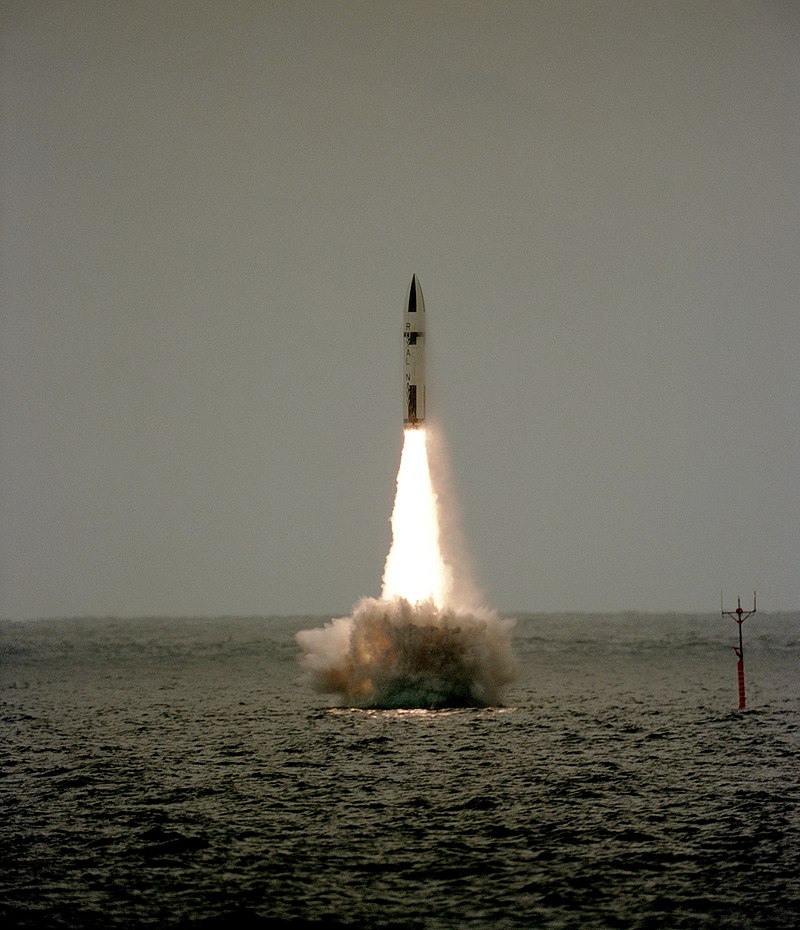Run Silent, Run Deep
It’s always odd to read about bits of my life on the Internet. Especially the bits I can’t talk about. Since I am still covered by the Official Secrets Act, I can’t talk about the goings-on aboard those dark, silent horsemen of the deep but I figure I am safe just commenting on some of the points in this Daily Mail article.
Deep beneath the surface of the Atlantic, HMS Vanguard — one of four identical Royal Navy submarines carrying Trident nuclear missiles — is on patrol.
Moving at a fast-walking pace, she is out there right now; undetectable, untouchable and armed with more explosive power than was unleashed by all sides in the duration of World War II.
Daily Mail
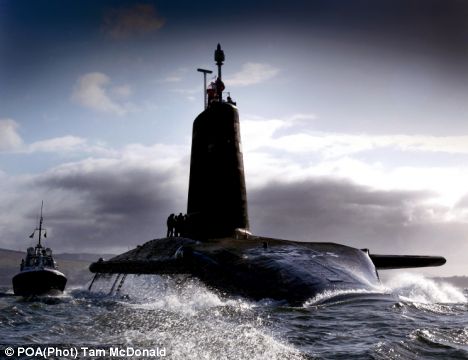
I spent almost a year on HMS Revenge — a Polaris submarine and a predecessor of the Trident submarines described in the article. Reading the story took me instantly back to a rainy dockyard on the banks of the River Clyde.
Nothing prepares you for your first encounter with a ballistic missile submarine. It’s not so much her size: though she’s big, 150 metres long, which takes your breath away. It’s the overwhelming menace which drips from her glistening grey casement.
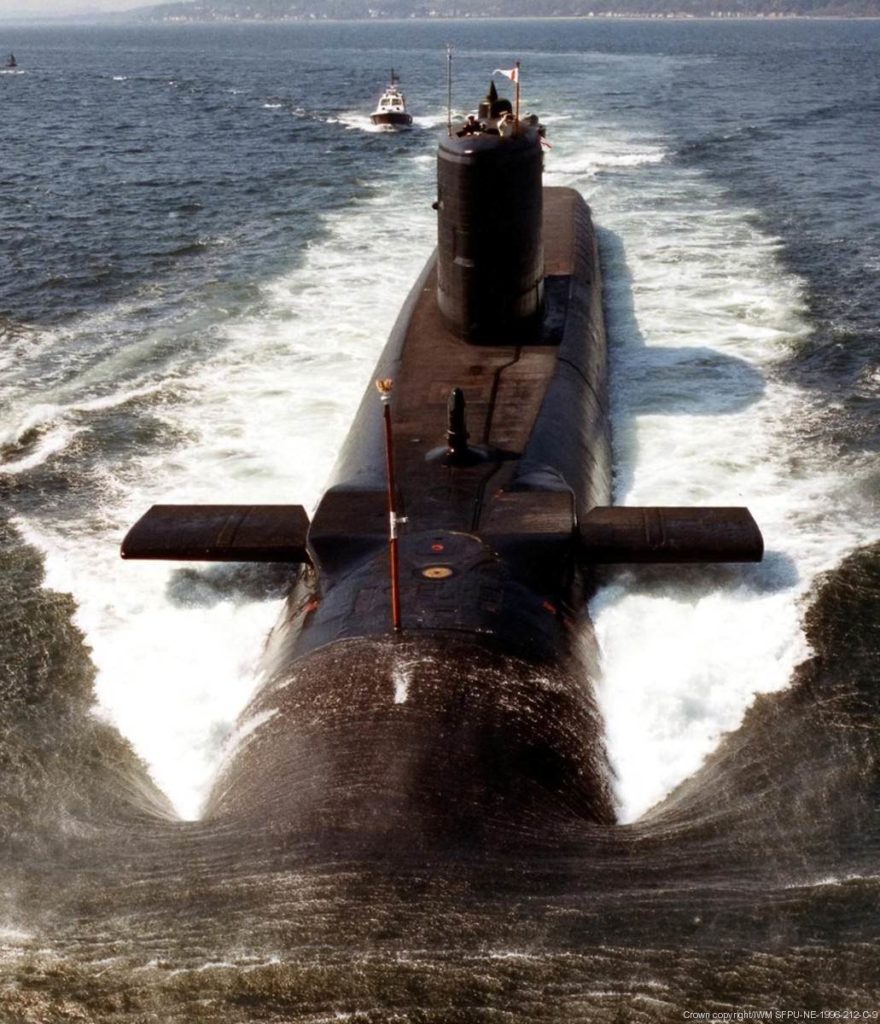
The article does a fine job of relating the cold, black steel of a submarine to the very human destruction that they can cause.
…how does it feel to be a part of the ‘human button’ a flesh and blood component in a well-drilled machine which, if deployed, would bring about the end of the world?
Daily Mail
I like that phrase the human button. It captures the distinction between the make-believe, hair-trigger apocalypse machines of Hollywood and the fallible, flesh-and-blood systems in the real world.
We can’t say where she is right now, because we don’t know. Even the Navy does not know precisely. Nor do most of her 160 or so crew.
This is true. There’s a tiny handful of people on board who know where the submarine is and where she is going — though the rest of us could often guess that it was somewhere cold from the temperature of the ocean.
The day I joined HMS Revenge as a 21-year-old Petty Officer, she had just come back from patrol. Ballistic missile submarines (called Bombers by the submariners who live in them) have two completely separate crews — port and starboard. While one crew is on patrol, the other is taking vacation and preparing for the submarine’s next patrol. As soon as the submarine returns from patrol, the operational crew goes off on their holibobs after a beer or two and the other crew takes over.
Everyone on board a submarine has more than one job. I had four.
Sonar
My day job was to maintain the sonar systems along with another Petty Officer (are you out there, Mark?) and we divided the sonars between us. This was what I had trained to do for the previous four years and I knew every transistor and relay of the main sonar (Sonar 2001) but, unfortunately, the main sonar was assigned to Mark and I got all the others. I had about 10 systems to maintain, including the towed array sonar, the depth sounder, the anti-sonar-sonar, the underwater telephone and all the hydrophones.
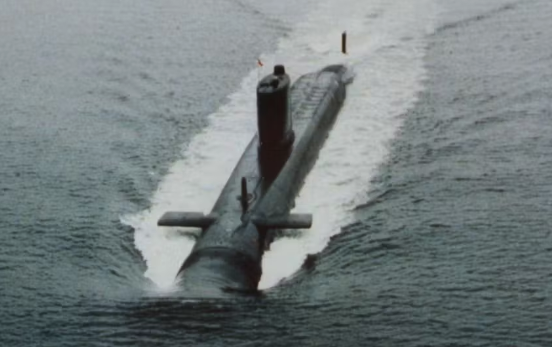
The sonars were all ancient and they all broke down a lot—usually in the middle of the night—and I would get summoned to fix them. I was the only one on board who knew how to fix them and I didn’t know very much. It’s pretty stressful when the most important sonar breaks and you have the Captain and the Weapon Engineering Officer standing behind you asking when it is going to be fixed. A submarine with no sonar is blind and would have to return to port. Better fix that sonar quickly!
Operations
Everyone has a watchkeeping job in addition to their day job. My watchkeeping job was Operations Officer (OPSO). During normal running, there are four senior people in the Control Room of the submarine: the Officer of the Watch who commands the ship while the captain is off doing other captainy things; the panel watchkeeper who monitors all the tanks and valves that keep the submarine at the right depth; the planesman who steers the boat; and the OPSO.
The OPSO is in charge of a bunch of sonar operators and he consolidates all their reports to keep a plot of the ships and boats nearby. One thing that most people don’t realise about sonar is that, unlike radar, sonar does not give you the distance of the target. Our submarine did have ‘active sonar’ (the PING-BLIP of sonar in the movies) but British submarines practically never use it. Using passive sonar, you only get the direction of the target from the noise it makes; you have no idea how far or how close the target is or what direction it is travelling.
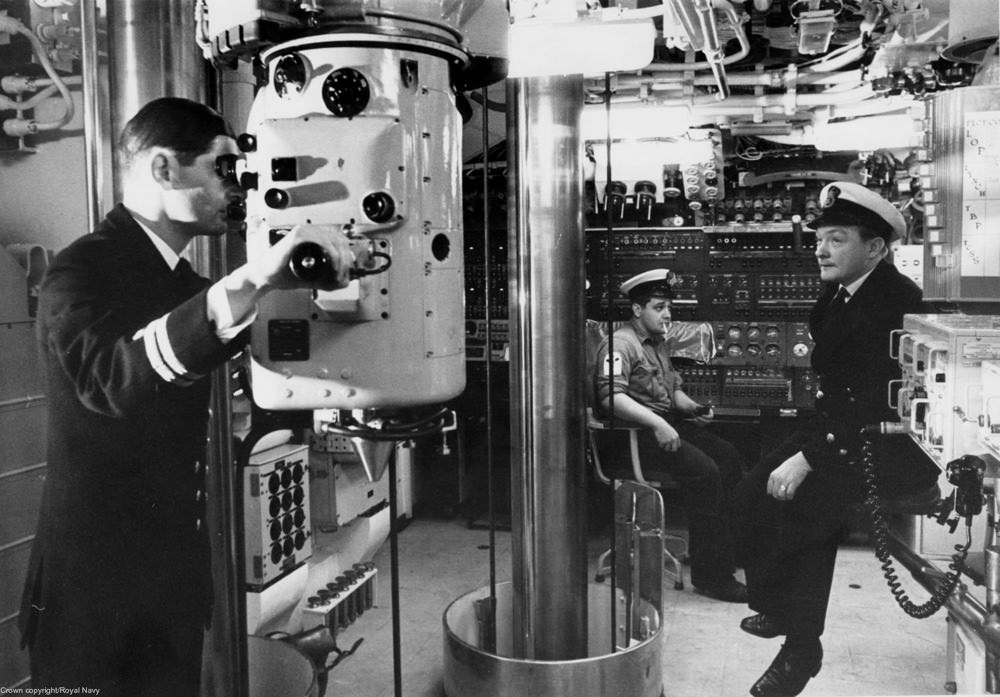
The initial report comes from the Sound Room where a bunch of 16-year-old boys sit listening on their headphones (the navy uses young boys because their hearing is better).
“Large Merch. Bearing 079.”
Another operator adds this merchant ship to the computer system to join the dozens of others that we might be tracking. Because we can’t tell how far away this ship might be, we guess based on the speed and how quickly the bearing is changing (AKA the bearing rate). If the bearing rate is high, the ship is probably close but unlikely to collide with us. If the bearing rate is low the target ship is either very far away or it is coming straight at us (Yikes!).
Every now and again, the sonar room invents a fake ship on a collision course to frighten the OPSO and see how he reacts. Everyone knows that the situation is fake except the OPSO and you can hear the stress in their voices as the reports get ever more frantic. In my first stress test, I was commended for handling the situation well but criticised for failing to panic sufficiently.
Fire!
On a surface ship, there’s a small firefighting team. If there’s a fire, the firefighters go fight it while everyone else finishes their dinner. On a submarine, everyone is a part of the firefighting team because fires are so much more dangerous.
For my third job, I was a member of the firefighting attack group. If there is a fire (it happens more often than you might guess), it is my job to run and grab an anti-flash hood and some breathing apparatus and run into the compartment where the fire is. We have to fight the fire while the main firefighting team puts on their fire-resistant polar bear suit and shows up with proper firefighting gear. Scary stuff!
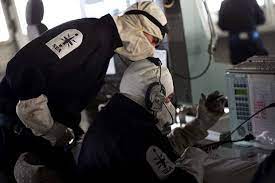
There was one fire in the auxiliary machinery room that was quite serious and Mitch (an older marine engineer with years of experience) and I simultaneously reached for the last breathing apparatus. Mitch said, “You better let me take this one, son.”
Torpedo! Torpedo! Torpedo!
The whole point of a Polaris submarine is to silently patrol the deeps, waiting for the day when the command arrives to fire the missiles that will end life on Earth (or, at least, a dozen Russian cities). The submarine tries to remain undetected while we wait for the call from the prime minister to bring on armageddon. Submarines are very, very quiet but firing a Polaris missile makes so much noise that every enemy submarine within a few hundred miles hears it and immediately comes to hunt us and kill us. That’s when it’s handy to have a few torpedoes of our own.
My fourth job was as a torpedo guider. Every REDACTED, we’d receive a signal from the UK telling us to fire a Polaris missile and we wouldn’t find out until the last minute whether the order was for real or just a practice. My job was to run to the torpedo panel and get ready to fire a torpedo. The torpedoes are wire-guided to the target by the ‘guider’ (me) who sits at a panel with a little screen—like a video game—showing the location of the torpedo and the target. When the torpedo gets close to its target, an active sonar on the torpedo takes over for the last bit.
I never actually got to fire a real torpedo but I sat next to Andy when he fired one at the practice range in Loch Long. The torpedoes I fired were all pretend.

21ft long, 1.5 tons, max speed 40mph, range 40,000 yards (Wikipedia).
Believe in the Mission
Our Captain was a pretty laid back dude but the First Lieutenant (Jimmy the One) was very Ra! Ra! Ra! The Jimmy made a speech over the tannoy as we left the Clyde for our patrol proper and said that if there was anyone on board who was not 100% committed to the mission, they should come up to the Control Room right now and he would arrange for them to be dropped ashore. My messmates held me back. I had been opposed to our nuclear deterrent since I was 18 but to have protested in that situation would have taken me into a world of trouble.
Apart from the fires and the practice missile launches and the constantly breaking sonar systems and that time we nearly ran out of oxygen, the patrol passed peacefully. Mostly I remember the boredom that was only relieved on Saturday nights when we’d have a dinner of steak followed by cheese—bomber crews always got the best food to keep our morale up. Then my very musical messmates would play English and Scottish folk songs late into the night while we drank heroic quantities of Carling Special Bitter.

Coming Home
When we finally arrived back in the Clyde after three months away, we had to navigate the dozens of fishing boats and the Russian Spy Ship that sits in the mouth of the Clyde to count the submarines out and count us back in again.
The first order of business is opening all our mail since we had had no communication while we were away. There’s a shocking number of Dear Johns (“I guess I won’t be going to see Fiona this weekend after all”) and reports of deaths in the family and house fires and car crashes that you might expect among 150 sailors who had not heard from their families for three months.
I got one special letter though. I had been selected to go to Britannia Royal Naval College at Dartmouth. No more patrols for me. A month later, I was a midshipman at Dartmouth and three months after that I left the Navy for good.

When you get promoted to officer, as far as the Navy is concerned you have left the Navy and rejoined. When you join the Navy, you are allowed to leave the Navy for any reason in the first three months and that was my plan all along.

